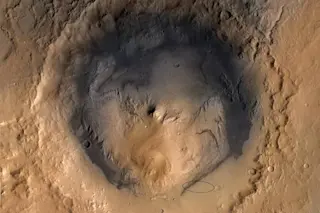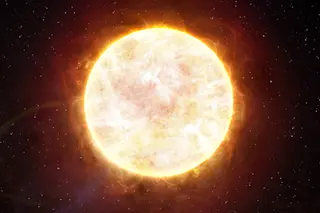Mars was a very different place as a young planet. Liquid water dotted the Red Planet’s landscape with lakes and rivers. But the planet’s climate changed drastically in the past few billion years. Today, scientists see the remains of the planet’s bodies of water in dried-up river channels and salts left in its rocks.
New data from the Curiosity rover now show that the planet’s waters were evaporating about 3.5 billion years ago. Curiosity found pockets of concentrated salts in rocks about 3.3 billion to 3.7 billion years old in Mars’ Gale Crater — evidence that a salty lake was evaporating from the surface around that time, scientists reported Monday in a new paper in Nature Geoscience.
Curiosity is well suited to studying the evolution of Mars’ environment because of its access to Gale Crater. The site formed when a meteor hit Mars at least 3.5 billion years ago, leaving ...














